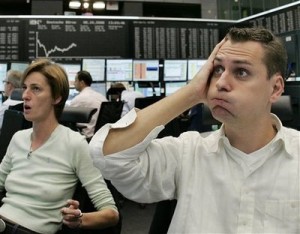Options trading scares the crap out of many of my friends and family – and rightly so! You can mess up big time when dealing with them, but thankfully your brokerage is aware of that and will limit your choices and abilities to get into scary trades based upon your financial knowledge.
All trades contain risk, and even the safest of options trade the Covered Call does have a couple of things to watch out for.
What is an Option?
An Option conveys the choice, but not the obligation, for the owner to obtain an underlying asset (let’s keep it simple and keep it to a stocks for this post, but there are other things too..) at a predetermined price on a certain date. In order to do so you pay a Premium for the privilege.
Those 4 things are everything you need to know, but it does get a little more complicated than that…
Calls and Puts
A Call Option allows the owner to BUY the underlying Stock at any time until the Option Expires for the Price Stated on the Option. An example of a Call Option would be Apple June $600 Call, the owner of this option is allowed to buy Apple stock for $600 at any time until June 22nd when it expires – so if next week the price of the underlying stock of Apple rises to $800 that owner just made $200 tangible profit per stock by buying them $200 under market value.
A Put Option allows the owner to SELL the underlying Stock at anytime until the Option Expires for the Price Stated on the Option. An example of a Put Option would be Apple June $600 Put – the owner of this one can make another person buy Apple from him for $600 – so if the stock pops like in the previous example to $800 it is worthless – but if the value had dropped instead to $500 then there would be $100 in profit from the trade.
Options Trading Levels
- Level 1 Covered Calls, Protective Puts Actually more Risk than Level 2 as you are tying your stock to the option, so if the stock crashes and you don’t have a proper margin balance you cannot sell it until you exit the option trade, which can be hard to offload when it has little value, however it is generally considered very safe within the options world, but I want you to know there is some risk here!
- Level 2 Buying Calls or Puts- The most you can lose here is only the amount of Premium Paid.
- Level 3 Debit Spreads – such as the Bull Call Spread – you buy and sell a spread of Calls, taking the money from one to partially pay for the other, so you net a Debit to your account (it costs you cash to initiate this trade) no more risk here than in the previous levels but you have to have a better grasp of options to comprehend the value in the trades and structure the spread.
- Level 4 Credit Spreads – this trade nets you a credit, but you are holding onto a risk within the position, that can absorb that credit and also a lot of your cash too!
- Level 5 Call/Put Writing – also known as Naked Calls and Puts. This is the most risky trade of all, you basically tell other traders that they can buy the underlying stock of your choice from you whilst not holding that stock. EG you sell an Apple $600 call and it rises to $800 you have to actually pay out $200 per option.
Final Thoughts
- If you trade options and are successful you will be subject to Short Term Capital Gains
- There is a saying that the smart money sells options, and the dumb money buys them, I know from personal experience that I have made a lot more money selling options than buying them, and I have only once embarked in a Naked Call sale which worked like magic, but did put a margin call of $26K overnight to my account. I made that move based on a play to earn $1K which I did, but shows there is a lot of risk to gather a small gain.
- When trading options they sell in blocks of 100 pieces of the underlying stock – so if you buy 10 of those Apple June $600 options which have a current Premium of $19.80 your trade will cost you $19,800! If they never reach above $600 they will expire worthless.
- Breakeven is calculated by amount of Premium Paid plus Strike Price or $19.80 plus $600 for those Apple shares – if they ever pop above $619.80 per share then you made profit, good job you!
- Profit is further hurt by the Brokerage you chose to trade with. Personally I trade with OptionsHouse as they offer very good rates (Read- very LOW rates) along with a strong platform. If you use something like TD Ameritrade or the other well known names they will charge a huge amount more per trade that will kill your profit.
- In future posts I’ll outline some of my trades and ideas, and why I am trying to add more risk to my Tax Advantaged Accounts and less risk to my Taxable Accounts.
Next, read Options Trading 102 where I talk more about the Covered Call

Leave a Reply